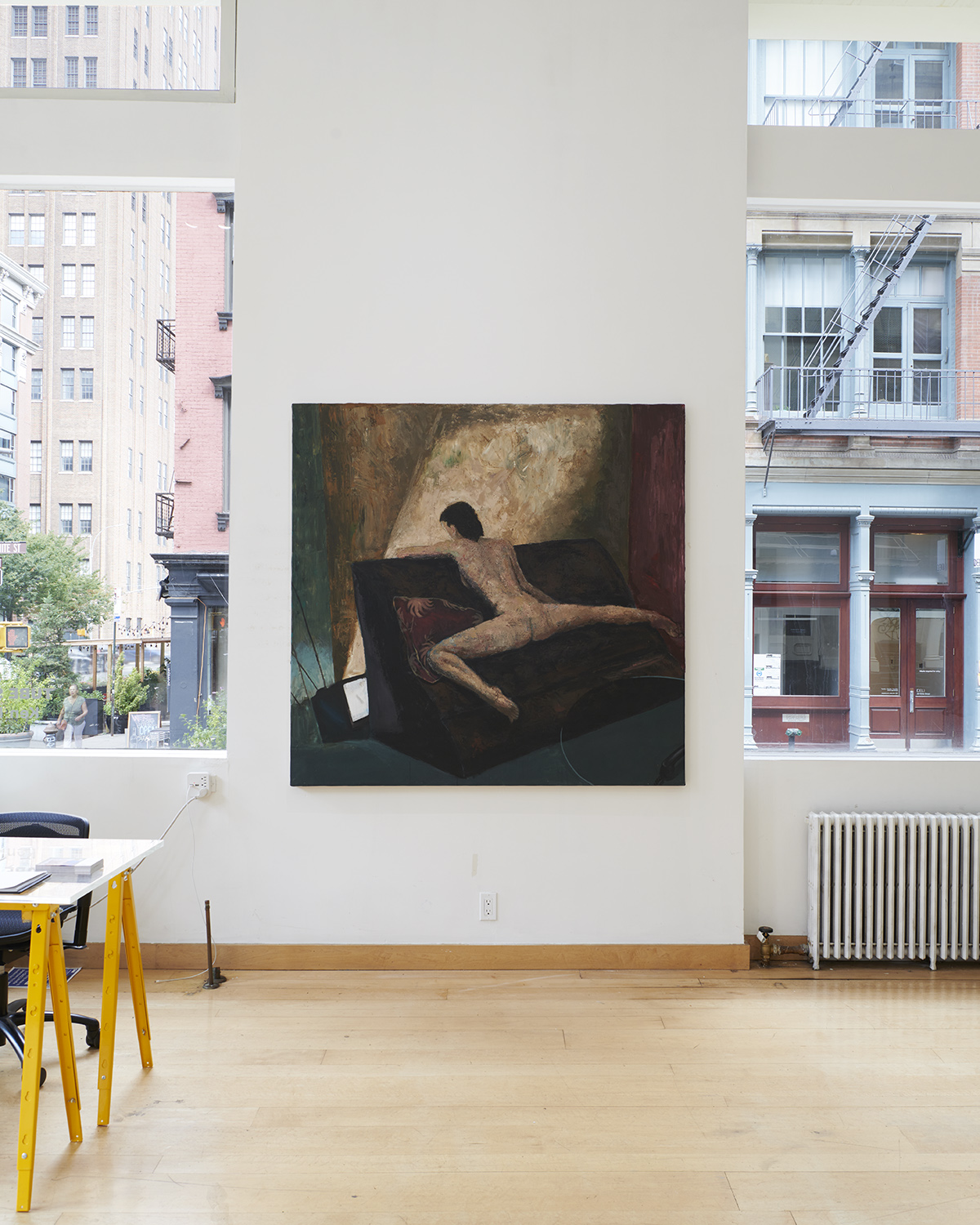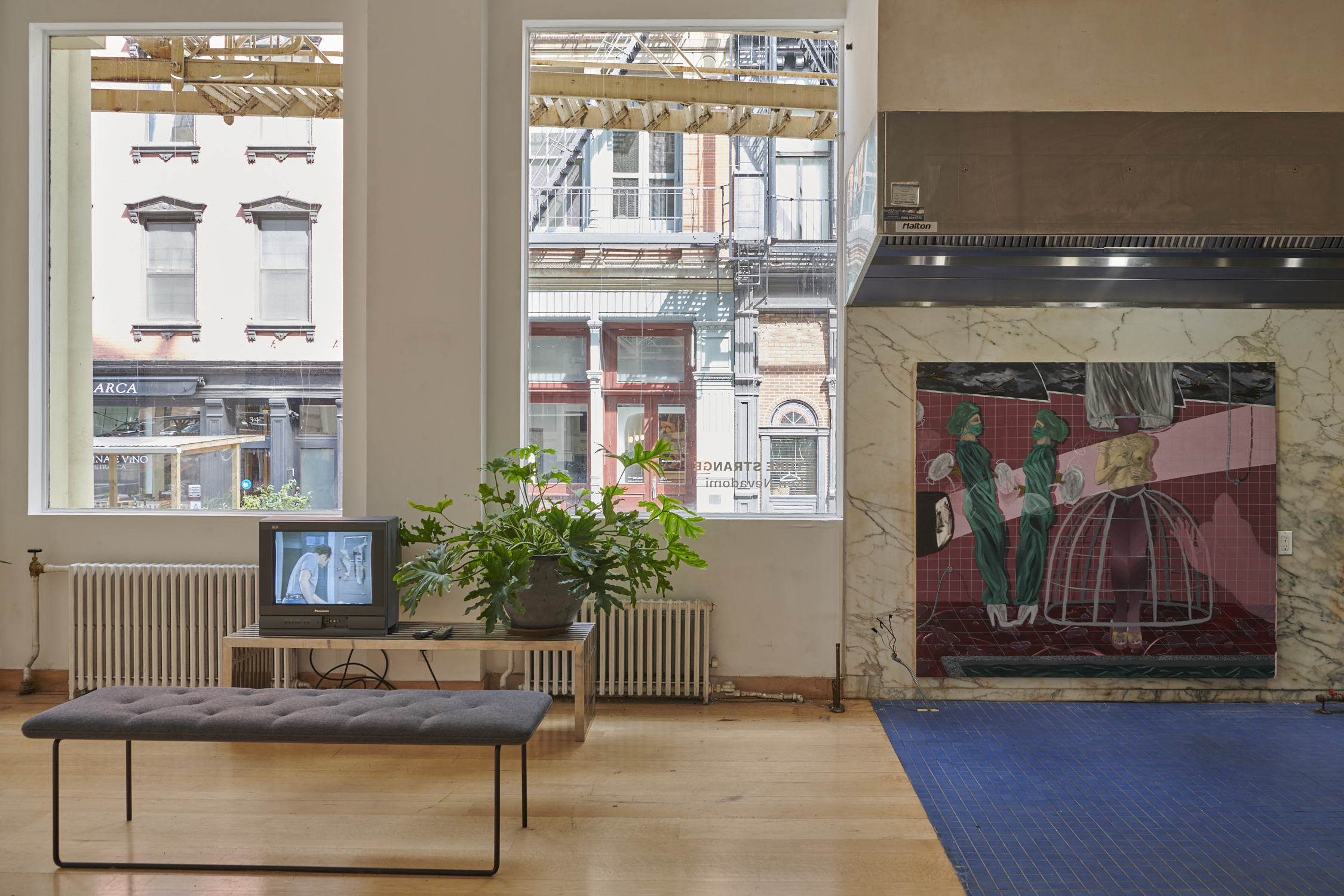
Tube Strange
Ken Nevadomi
September 9th-30th, 2021
New Canons
281 Church st. New York, NY
Echoes of primitive Ohio. Bionic rats for children of the poor. Muscular Christians. Man eats fish. Enthusiastic TV personalities. Western Thrombosis. New revelations in lobotomy. The hysterectomy 500. Humanity saved through Coma. Mondrian pursued by Kamikazes.
Shark Miasma on the loose. Man Stays in Place for 40 years.
These notes, a small sample of the innumerable quips that fill Ken Nevadomi’s sketchbooks, dating back to the mid 1950s, remain some of our only clues when trying to chart the artist’s closely kept intentions. Often eluding the quick read, Nevadomi’s work thrives in a maelstrom of irony, erotic ambiguity, and comical anachronisms, reflecting the chaos and pessimism that permeated the collective unconscious sometime between the twilight of the American Rust Belt and the dawn of the Information Age.
I've always been bothered by those paintings of Eden that make the place look like a valley in Pennsylvania. - Ken Nevadomi, 1981
At 281 Church St., TUBE STRANGE features two distinct bodies of work made around 1980 and 1990, that highlight the expanse of Nevadomi’s technical prowess and his oftentimes complicated and unsettling subject matter. The later series of paintings, entitled Tube Strange, features a group of crudely rendered domestic interiors anchored by a solitary figure affixed to a glowing television set - each unaware of a looming presence watching them, or watching out for them. Painted at a time when the advent of cable television in American homes signaled a new paradigm afoot in our growing engagement with mass media, these disquieting tableaus conjure a premonitory echo of our contemporary moment, where the surveillance is disembodied, and the appliances are smaller, smarter, and broadband in their mesmeric grip on our psyche.
In stark contrast to these works are a group of paintings from 1978-1980, that center on the myth of St. Bridget, a recurring muse in Nevadomi’s work. Stuffed with restless symbolism, these tightly rendered compositions retain the vestiges of the artist's formative work as a commercial illustrator at American Greetings in the late 1960’s, alongside friends Harvey Pekar and R. Crumb. In works like Erroneous St Bridget (1980) and 20th Century Mayonnaise (1978-1980), the artist maintains a razor thin line between punishment and satisfaction, torture and cure, the disturbing and the sublime.
Nevadomi was born into a troubled family on Cleveland’s gritty south side. After enlisting in the army at 17 and serving two tours of duty overseas, he would eventually return to his hometown, where he would remain for the rest of his life, working as a professor of painting at Cleveland State University and amassing a remarkable body of work over his nearly 50-year career. As the expressionist painter Doug Utter attests: “Planting both feet in Cleveland is already an act of defiance that guarantees obscurity and marginalization — a kind of originality to which few artists aspire. But Nevadomi has held his ground, doing his work and following his path through the decades–the most that can be done by anyone, in any context.”
Retiring from his position at Cleveland State University in 2013, Ken continues painting and filling his sketchbooks. In 2018, he was diagnosed with a mild case of Alzheimers and has recently moved to assisted living where he will soon resume teaching painting again, this time instructing the members of his retirement community. As the artist affirms in a 1984 Smithsonian interview with curator Dennis Barrie, “…my attitude is still the same. I can't count on selling art as a way of life, as a way of making money. And I don't even think about it, I like to teach.”









